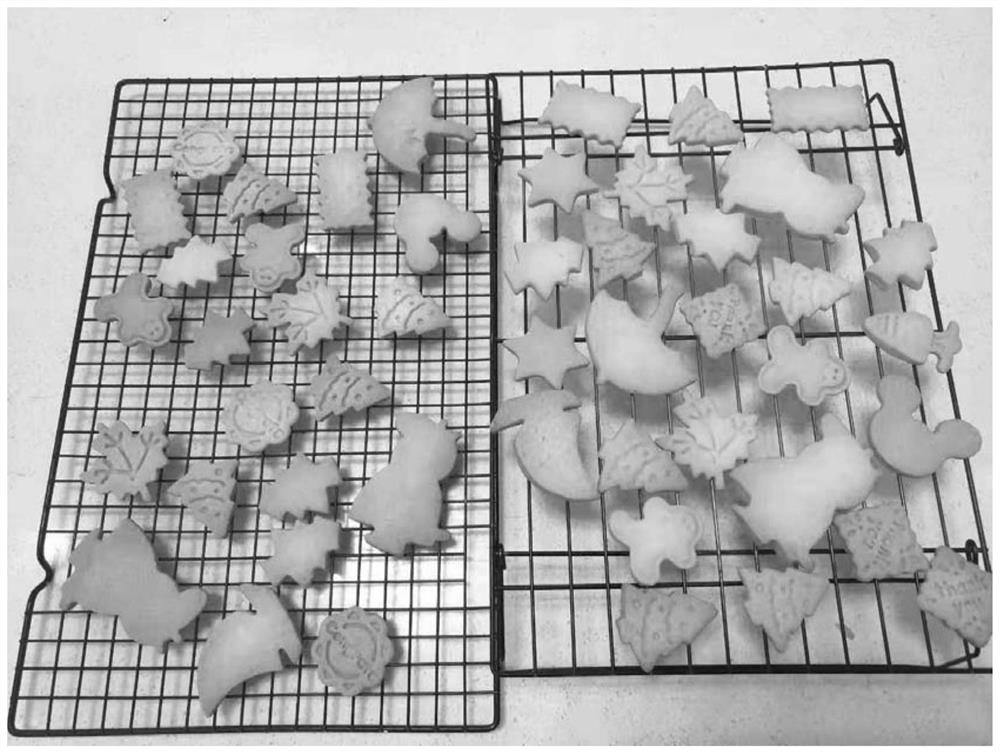Processing and consumption method of high resistant starch rice
A technology of high resistant starch and processing method, which is applied in the direction of food science, etc., can solve the problems of functional reduction, damage, and RS content reduction of blood sugar regulation, so as to delay the rise of blood sugar, increase the content of resistant starch, and overcome poor taste Effect
- Summary
- Abstract
- Description
- Claims
- Application Information
AI Technical Summary
Problems solved by technology
Method used
Image
Examples
Embodiment 1
[0037] This example compares the changes of resistant starch content after the polished rice with high resistant starch content is washed and roasted with different water contents.
[0038] The polished rice described in this example is from Youtangdao No. 2, which is a derivative line of Jiangtangdao No. 1 bred by molecular marker-assisted selection breeding.
[0039] Sample: Drain the rice to different water contents after washing and panning, and take 500g respectively for roasting, and measure the resistant starch content after roasting until cooked. The water contents are: 13%, 15%, 17%, 19%, 25%, 27%, 32%, 38%.
[0040] The results are shown in Table 1.
[0041] Table 1 The content of resistant starch after roasting with different water content after washing and panning
[0042] Moisture content before roasting 13% 15% 17% 19% 25% 27% 32% 38% RS 11.48% 11.64% 15.24% 21.77% 20.77% 18.0% 10.1% 7.81%
[0043] The results in Table 1 show...
Embodiment 2
[0045] This example compares the effect of different processing methods on the content of resistant starch.
[0046] The polished rice described in this example is from Youtangdao No. 2, which is a derivative line of Jiangtangdao No. 1 bred by molecular marker-assisted selection breeding.
[0047] Processing method:
[0048] 1. Youtangdao No. 2 polished rice is washed and drained to a moisture content of about 20%, roasted at 130-150°C until cooked (the rice is golden yellow), pulverized, and passed through an 80-mesh sieve;
[0049] 2. Youtangdao No. 2 polished rice is washed and drained to a moisture content of about 14%, pulverized, roasted at 130-150°C until cooked (the rice is golden yellow), and passed through an 80-mesh sieve;
[0050] 3. Youtangdao No. 2 polished rice is cooked in a conventional cooking method (rice water ratio of 1:1.7), soaked for 20 minutes, and after being cooked in a rice cooker, keep warm for 20-30 minutes.
[0051] Sensory evaluation:
[0052] ...
Embodiment 3
[0057] Using the optimized processing method, the polished rice of Jiangtangdao No. 1 and its derivative lines, including Youtangdao No. 2 and Youtangdao No. 3, were processed, and then the resistant starch content was determined together with the raw meal. The results are shown in Table 3.
[0058] Table 3 Resistant starch content of Jiangtangdao 1 and its derived lines
[0059] Variety Cornstarch RS Processed cooked powder RS Jiangtang Rice No. 1 11.67% 19.2% Youtangdao No. 2 11.48% 21.8% Youtangdao No.3 12.21% 20.6%
[0060] Jiangtangdao No. 1 and its derived lines Youtangdao No. 2 and Youtangdao No. 3 all contain the same genotype, that is, the mutation of the base T->C in the 105th position of the 16th exon of the SBE3 gene. The results in Table 3 show that the differences in the starch resistant starch content of the polished rice of the three strains are not significant, and the cooked rice flour with high resistant starch content ...
PUM
 Login to View More
Login to View More Abstract
Description
Claims
Application Information
 Login to View More
Login to View More - R&D
- Intellectual Property
- Life Sciences
- Materials
- Tech Scout
- Unparalleled Data Quality
- Higher Quality Content
- 60% Fewer Hallucinations
Browse by: Latest US Patents, China's latest patents, Technical Efficacy Thesaurus, Application Domain, Technology Topic, Popular Technical Reports.
© 2025 PatSnap. All rights reserved.Legal|Privacy policy|Modern Slavery Act Transparency Statement|Sitemap|About US| Contact US: help@patsnap.com

